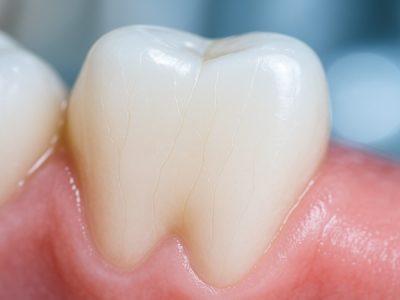Root canals are a common dental procedure, with a success rate of over 95%, according to the American Association of Endodontists. With proper after-care treatment, a root canal can last a lifetime. In this dental procedure, the soft centre of the tooth is removed. This is called the pulp. It is made up of connective tissue, blood vessels, and nerves, which are all crucial in helping a healthy tooth grow.
Endodontists and general dentists perform a root canal procedure. Patients typically go under local anaesthesia.
In this article you will understand when a root canal is needed and the proper after-care procedure involved to avoid decay.
Do You Need a Root Canal?
The best way to answer this question is to have a dental professional examine you. Schedule an appointment with your dentist to determine if a root canal is needed. Your painful tooth will be checked thoroughly using X-rays or other equipment to confirm the diagnosis. You may be referred to an endodontist.
Root canals are performed to treat an injured, infected, or inflamed pulp. It’s often difficult to figure out on your own if you need a root canal. Even if the soft inner part of your tooth (pulp) is dead, the crown or the portion of the tooth that you can see above your gums will remain intact. Allowing the dead pulp to stay in your mouth will affect the structure of the tooth. That’s why a root canal should be performed.
A damaged pulp can occur due to many reasons, including:
- A cracked tooth
- Untreated tooth decay, penetrating deep into the tooth
- Tooth injury after getting hit in the mouth or other similar incidents
- A particular tooth undergoing several dental procedures
It’s often easy to spot an injured or infected pulp. You will typically experience tooth pain and increased sensitivity. The gums are swollen, and you could feel a bit of heat in the affected area. Other symptoms to watch out for are:
- Discolouration at the front part of the tooth
- Pain when eating
- Pain when touching the tooth
- Cracked or chipped tooth
- Loose tooth
If you have some of the symptoms above, make sure that you visit your dentist as soon as you can. A root canal procedure will help clean out the decay and save the infected tooth. Bacteria and decay will be removed from the pulp, nerve, and root. The procedure also involves disinfecting the tooth and surrounding area with antibiotics. The last step is sealing, which ensures the prevention of new decay.
Will It Hurt?
A common question that people often ask about root canals is whether or not the procedure hurts. Many dental procedures get a bad rap for being painful, bloody, and messy. But such fears are unfounded. Thanks to today’s technology and the skill and knowledge of our dentists, root canals are neither painful nor scary. They are comparable to having a deep filling. Plus, dentists use local anaesthesia, which numbs the tooth and gums, so there’s little to no pain.
Root Canal and Decay
The root canal treatment keeps your natural tooth in place. Further decay can easily be prevented so that this tooth and your other teeth will not be affected. The problem is that a root canal can make the tooth more fragile. For this reason, a root canal is usually covered with a crown to make it more durable, almost functioning like natural.
Some people still feel the same pain even after the root canal procedure. If you have the same situation, you must talk to your dentist. The pain can be due to several reasons, including the root canal not healing properly. It may also be a sign that the infected area was not disinfected correctly, perhaps due to complex root anatomy. Another reason is that you just got injured, which now affects the tooth that has been treated. This injury invites bacteria into the tooth.
But here is a more common cause of persistent pain: new decay. If the treated tooth has new holes or cavities and decay starts to occur, it can infect the filling material used in a root canal. This leads to a new infection.
So, the answer to the question, “Can root canals decay,” is yes. The best option for treating pain, infection, and decay after a root canal is retreatment. In other words, you should have a new root canal to solve the problem.
Signs of an Infected Root Canal
Pain is normal after a root canal procedure. Slight discomfort, swelling, and tenderness should not concern you, even if they last a few days after your treatment. Most people have mild pain, which will then subside after that. However, you should always be in contact with your dentist if you continue feeling the pain for over a week unless the pain has significantly decreased since the procedure.
Pain and discomfort should not be the same or worse before and a day after the treatment. For your sanity, never hesitate to talk to your dentist to know the next steps to take. Root canal infections are rare, but they can happen. Decay can cause pain, delaying the progress of healing.
If your tooth does not heal properly, it could result in pain for months or even years. That’s why you should not ignore any of the signs listed below that warrant a return trip to your endodontist:
- Bearable to unbearable pain that has persisted for more than a week since your root canal treatment
- Tenderness and discomfort when eating or exposing the tooth to extreme temperatures
- Yellowish or greenish pus discharge
- Swollen, warm, red tissue near or around the affected tooth
- Swelling on the face and neck
- Bad taste in the mouth, sometimes causing bad breath
Root canal infection, just like other infections, can easily spread to the surrounding tissue. Therefore, it can affect other teeth, tissue, and gums. Unfortunately, there is no other way to get rid of the infection than to seek your dentist’s help. We advise that you do not wait. As soon as you recognise the symptoms, make sure you schedule a visit to your dentist to prevent the infection from spreading.
Root Canal Retreatment Due to Decay
Many people do not know that their treated tooth becomes susceptible to injury, which includes decay. Typically, patients think that getting a root canal means that their tooth will no longer get cavities. After all, there will be very little to no original tooth left above the gum line. The only thing that they will see is a crown that looks and acts like a normal tooth.
Nerve and blood supply is absent to the root canal-treated tooth, meaning the area does not sense hot or cold temperatures. This lack of sensation may lead to believing that the tooth is fully healthy. As you may know, one of the signs of decay is sensitivity, which is often absent in people who have had a root canal.
Your tooth, no matter how little is left after a root canal procedure, is still prone to decay if you do not practice good oral hygiene. Decay can quickly form around the crown. It’s worse with treated teeth because the area can dry out, causing it to be more brittle and prone to breakage. This is why a crown is often required, which will protect the site against damage and cracking. However, a crown will not prevent tooth decay.
For this reason, retreatment may be necessary. Your dentist will tell you if you require another root canal procedure, which will work to support the previous one. The second procedure may help in healing and saving your tooth.
What Happens During Your Second Root Canal Treatment?
During the root canal retreatment, the affected tooth will be reopened to access the filling material used in your first procedure. If you had a complex procedure, which involved a crown, along with post and core materials, everything would be disassembled. These materials will be removed to reach the root canal.
With everything removed, here are the steps that follow:
- Canals are cleaned to allow a full examination and discovery of additional canals or other areas that may require treatment.
- The dentist will fill the canals before sealing.
- A temporary filling will be put in place.
Endodontic surgery may be necessary if the canals have unusual anatomy, causing the narrowing or blockage of the canals. This surgery involves cutting or making an incision, which will allow the root to be sealed properly.
When the whole retreatment process is complete, your dentist or endodontist will tell you to return and get the crown. Other restorations may be necessary to protect the tooth.
You can avoid any retreatment by working with your dental professional. Whether you experience pain or not, you should always be in contact with them. Regular cleanings are a must, which will also help you determine if your root canal is still in good condition.
An alternative to a root canal replacement is extraction. This means there is no other way to save the tooth, which you can replace with a partial denture, bridge, or implant.
Caring for Your Root Canal
Retreated or not, you have to keep your root canal treated tooth healthy. Root canals can last for years or even your whole life with proper care. Here are the best ways to ensure your root canal and crown will stay in good shape for the years to come:
- Don’t eat hard foods, especially if you just had your treatment.
- Brush twice a day and floss at least once.
- Try to avoid any food or drink with high sugar content.
- Make sure that you visit your dentist for regular cleanings and evaluation.
Oral bacteria are the nemesis of your teeth. They can lead to decay or caries even if your tooth is covered by a crown. If you reduce your sugary foods and drinks consumption and brush and floss as recommended, the root canal and crown will look and function properly for years.
Do you need a root canal? Contact Perth’s friendly dentists at Chelmsford Dental today.






